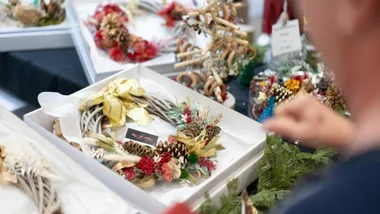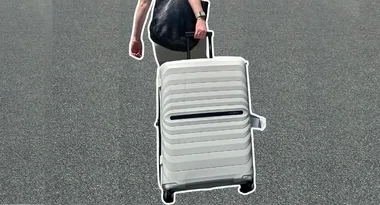From poisonous snakes to man-eating crocodiles, Australia has a serious reputation for dangerous wildlife. But most of the world’s most dangerous animals don’t live in Australia – such as Malaria-carrying Mosquitos, Cape Buffalo, Hippopotami or the Black Mamba – and you’re much more likely to die crossing the road than you are to be attacked by an animal in Australia.
Nonetheless, there is a lot of truth in our country’s notoriety for lethal wildlife, and these top ten most dangerous animals in Australia are proof of that!
RELATED: What Are Australia’s Most Poisonous Plants?
10. Common death adder
Scientific name: Acanthopis antarticus
Appearance: Around one meter long, with a thick brown body covered in red and black bands and a creamy underside. The broad, flat, triangular head contains the longest fangs of any Australian snake.
Location: Mostly in Sydney bushland and the grasslands of Australia’s eastern coast. Less common in Northern, Western, and South Australia.
Deadliness: Slightly less effective venom than the Eastern brown snake and Coastal taipan, but still in the top ten most venomous snakes in the world.
How to know if you’ve been attacked: The bite is not painful but the symptoms can be excruciating, including numbness, respiratory difficulty, impaired motor and sensory functions, paralysis, drowsiness and swollen lymph nodes.
What to do if you’re attacked: Get away from the snake. Dial triple zero. Apply a pressure bandage. Do not wash or attempt to suck out the venom.
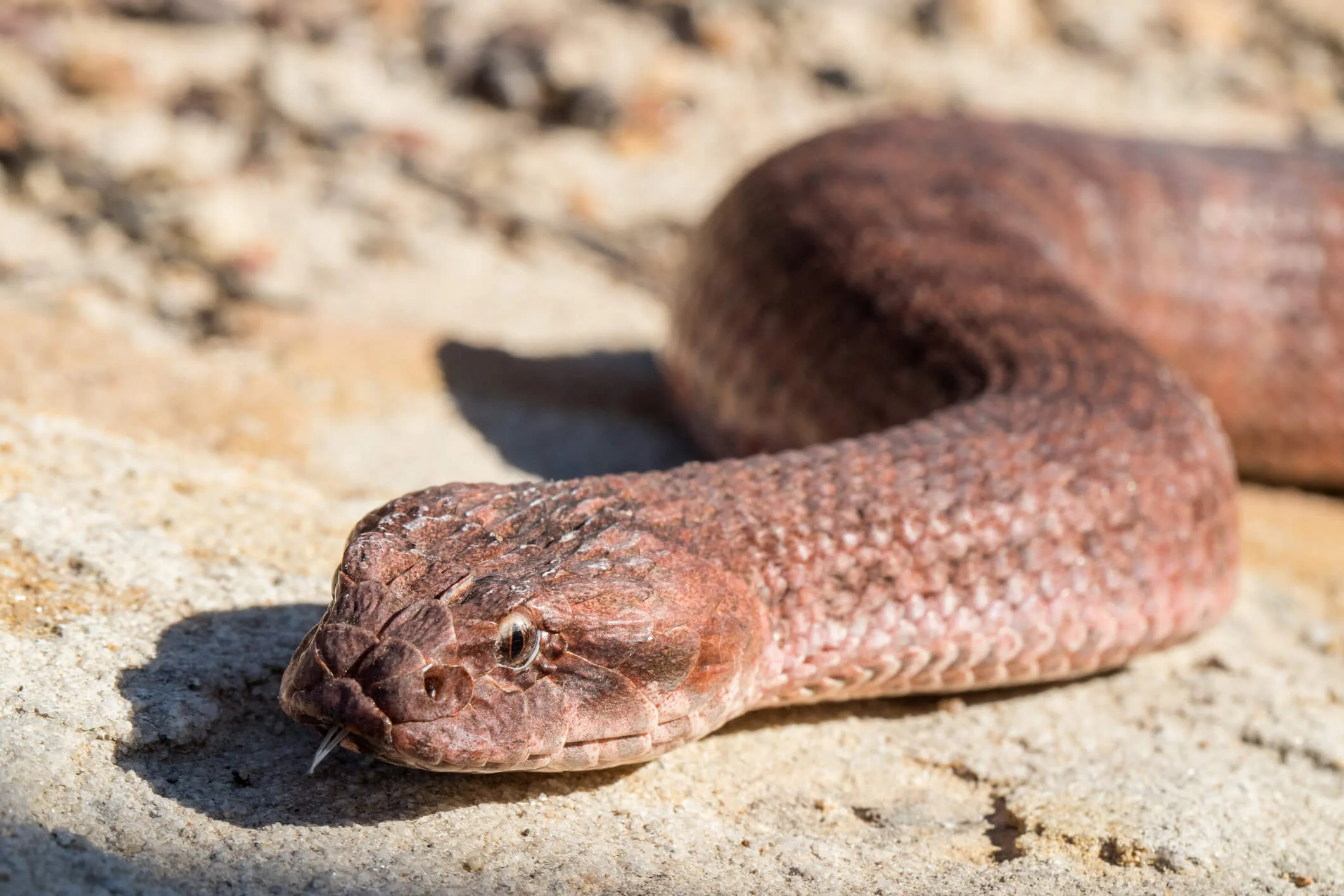
9. Coastal taipan
Scientific name: Oxyuranus scutellatus
Appearance: Around two meters long and slender. Shades of brown with a creamy belly.
Location: Mostly in Northern and Eastern Australia, particularly along the coast of Queensland. Can be found hundreds of kilometres inland despite the name.
Deadliness: The venom can kill in under 45 minutes, however, they are rarely encountered with no recorded deaths.
How to know if you’ve been attacked: Mild swelling and pain around bite followed by headaches, nausea, paralysis and vomiting.
What to do if you’re attacked: Call triple zero. Do not try to suck out the venom or wash the bite. Stay calm, bandage and immobilise immediately, preferably with a splint.

8. Blue-ringed octopus
Scientific name: Genus Hapalochlaena
Appearance: Five to 20 centimetres long. Brown with glowing blue lines and rings that appear when it is disturbed.
Location: Coral reefs and rock pools around Australia’s coastline.
Deadliness: Carries enough venom to kill 26 adults in minutes, however, stings essentially never occur unless the octopus is touched or picked up.
How to know if you’ve been attacked: Paralysis will be induced within minutes and breathing will become difficult.
What to do if you’re attacked: Dial triple zero. Apply pressure immobilisation with bands or bandages and a splint if available. Stay still and calm. Assisted respiration may become necessary.
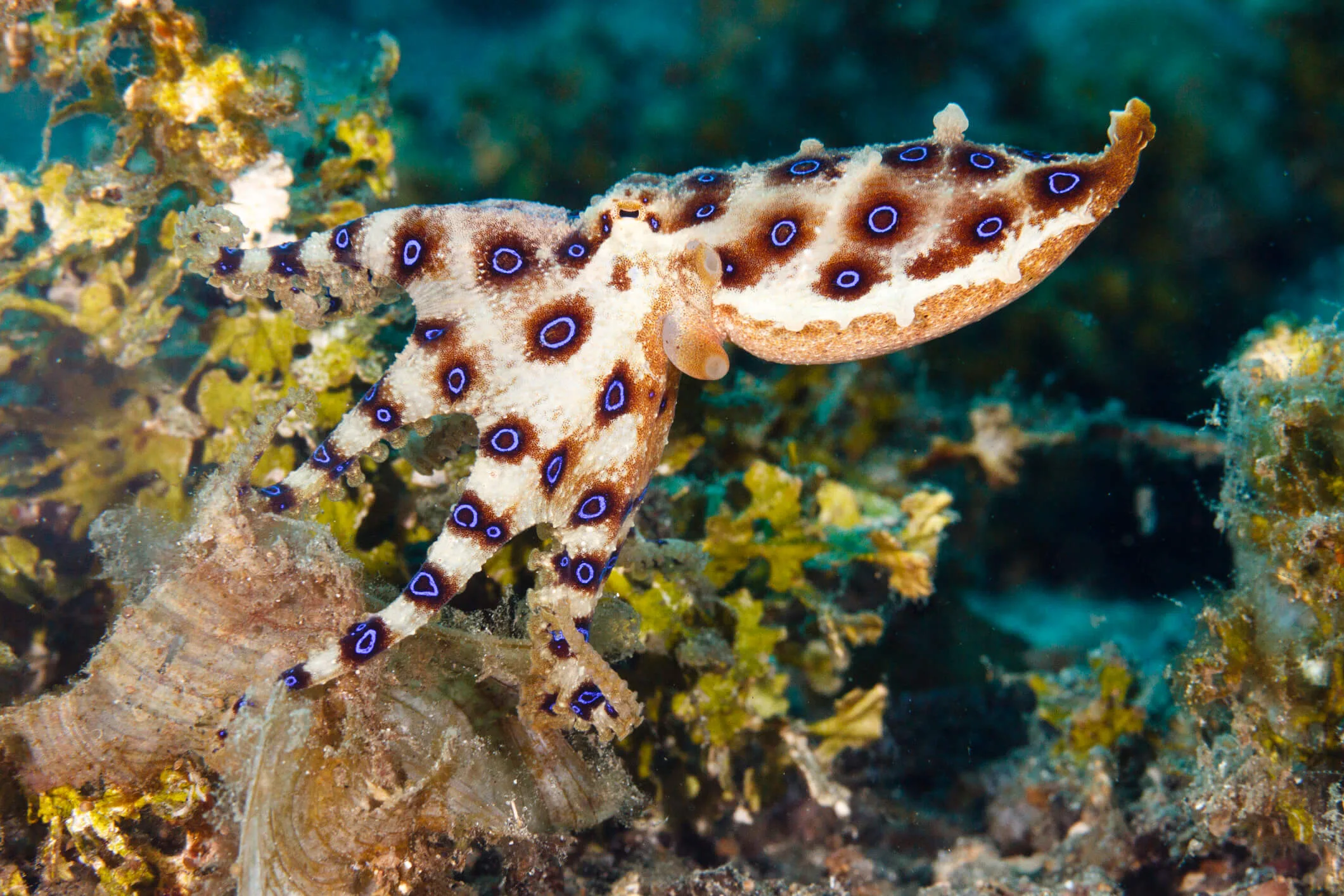
7. Sydney funnel-web spider
Scientific name: Atrax robustus
Appearance: Between one and five centimetres long. The glossy, hairless, and dark coloured body ranges from blue, black, brown and deep purple colours.
Location: Most of Sydney’s north shore. They build burrows in dark places such as beneath logs or bricks.
Deadliness: The male’s venom contains a neurotoxin that targets the nervous system and can be fatal.
How to know if you’ve been attacked: Extreme pain emanating from the bite, followed by sweating, nausea and muscle spasms.
What to do if you’re attacked: Lie down and stay calm. Dial triple zero. Apply a bandage firmly without stopping blood supply. Don’t move, and immobilise the injured limb.
6. Saltwater or Estuarine crocodile
Scientific name: Crocodylus porosus
Appearance: Between five and seven meters long with heavily armoured skin. The body is dark green with lighter tan areas. With a long snout, the nose and eyes are on the top of its head which allows it to hide underwater.
Location: Northern Australia, near the ocean, particularly in estuaries.
Deadliness: Considered the animal most likely to eat a human.
What to do if you’re attacked: If you’re caught in its jaws, attack with full force, particularly the eyes. This can cause it to release you. Escape the water and run – humans are generally faster on land than crocodiles are.
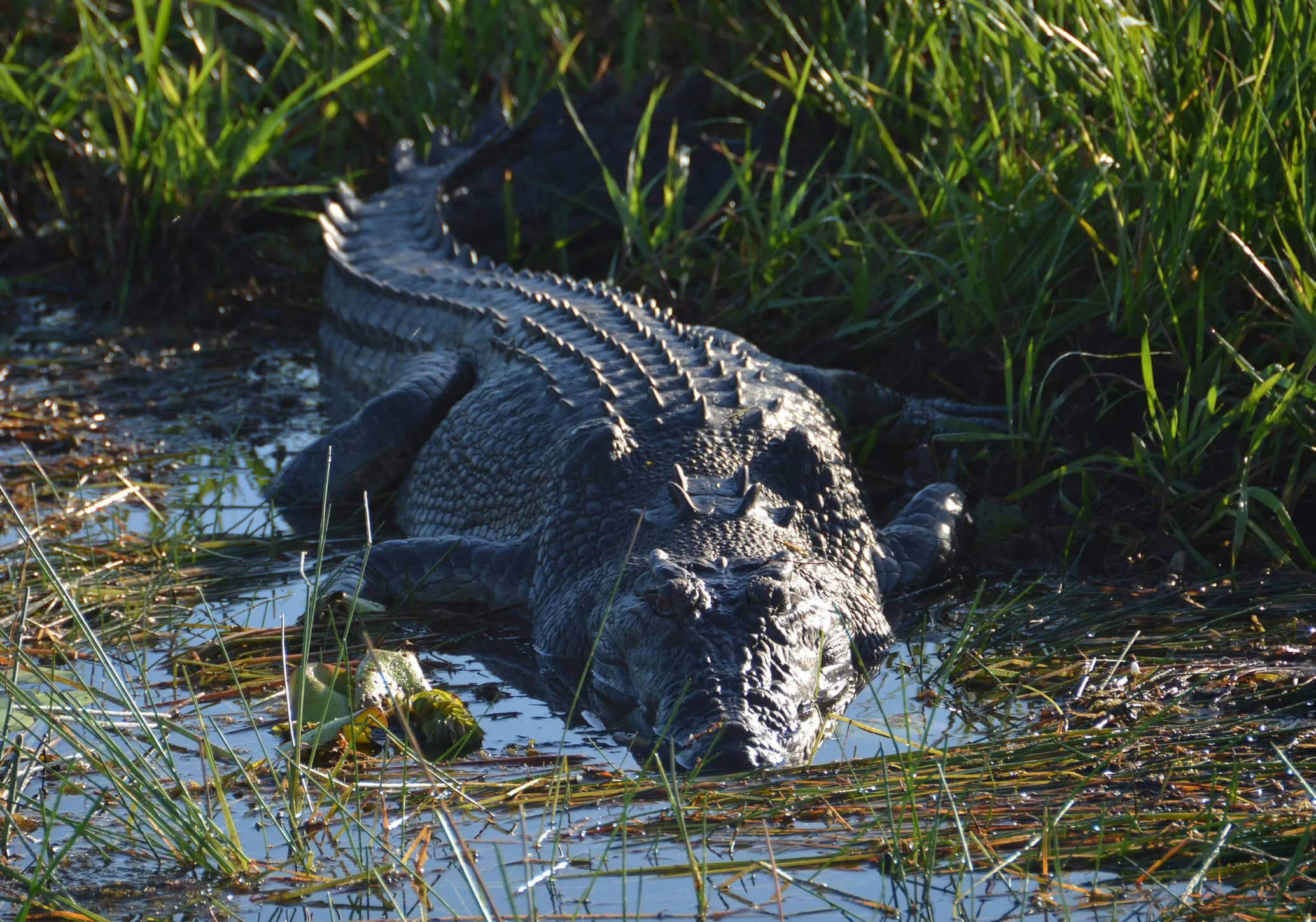
5. Eastern brown snake
Scientific name: Pseudonaja textilis
Appearance: Up to two meters long. Shades of brown with a pale yellow underside
Location: All over Australia and in most environments. They are most common in open grass and woodlands in the eastern half of Australia.
Deadliness: One of the top ten deadliest snakes on earth, it’s responsible for the most fatalities of any Australian snake. The venom causes paralysis and uncontrollable bleeding.
How to know if you’ve been attacked: The bite can be painless and hard to detect at first. Swelling, severe pain, anxiety, nausea, breathing difficulties and paralysis can ensue.
What to do if you’re attacked: Call triple zero. Stay calm as panicking will increase the spread of the venom. Apply pressure immobilisation with a bandage or splint. Don’t move or wash the bite.
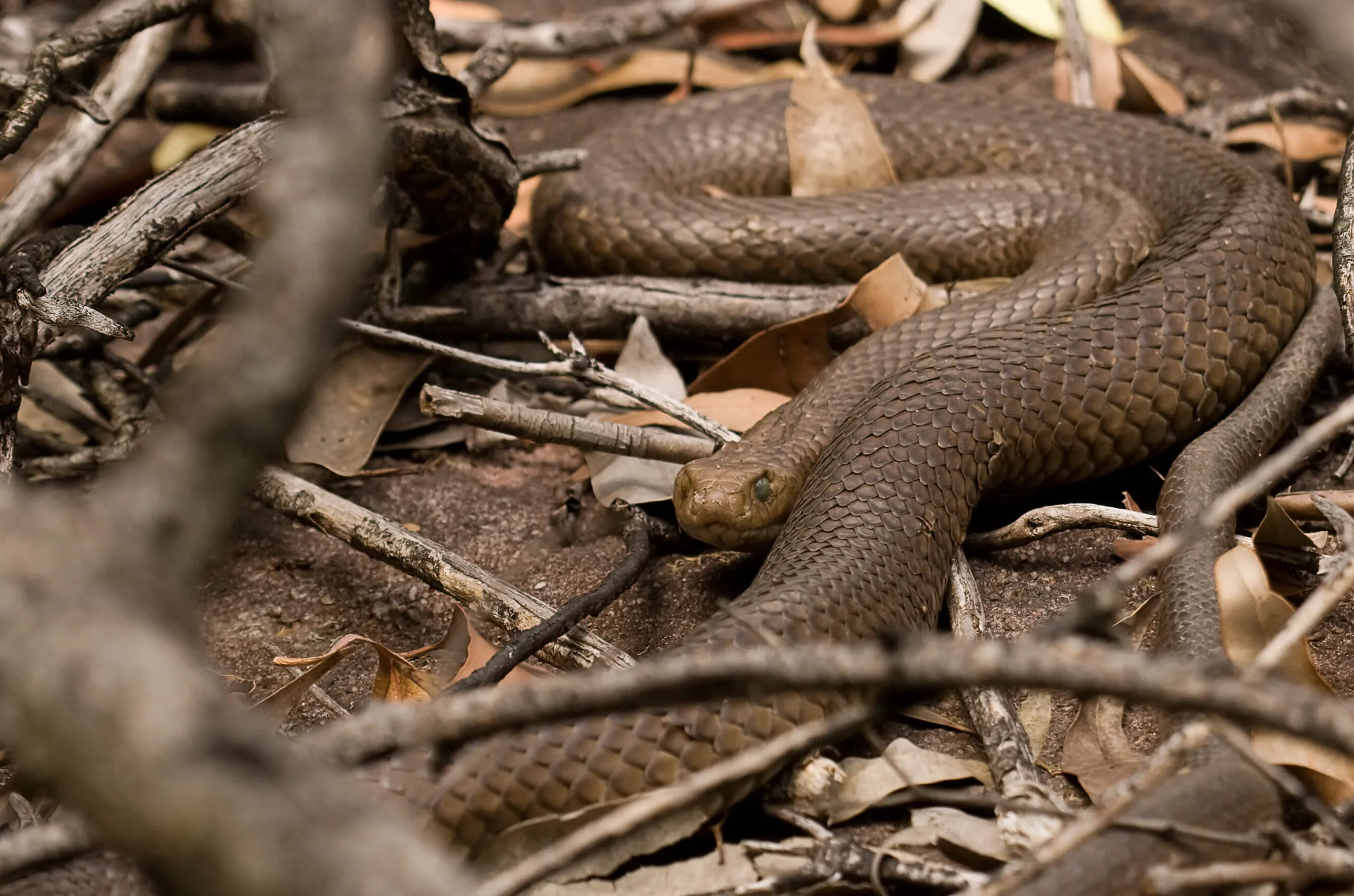
4. Bull shark
Scientific name: Carcharhinus leucas
Appearance: Two to three meters long. Gray on top and white underneath. The body is stout with long pectoral fins which often have dark tips.
Location: Coastal waters, rivers, harbours and estuaries around Australia.
Deadliness: Attacks are relatively rare, however, Bull sharks are considered to be the most dangerous and aggressive sharks.
What to do if you’re attacked: Move slowly towards the closest safety. Don’t thrash or turn your back to the shark.
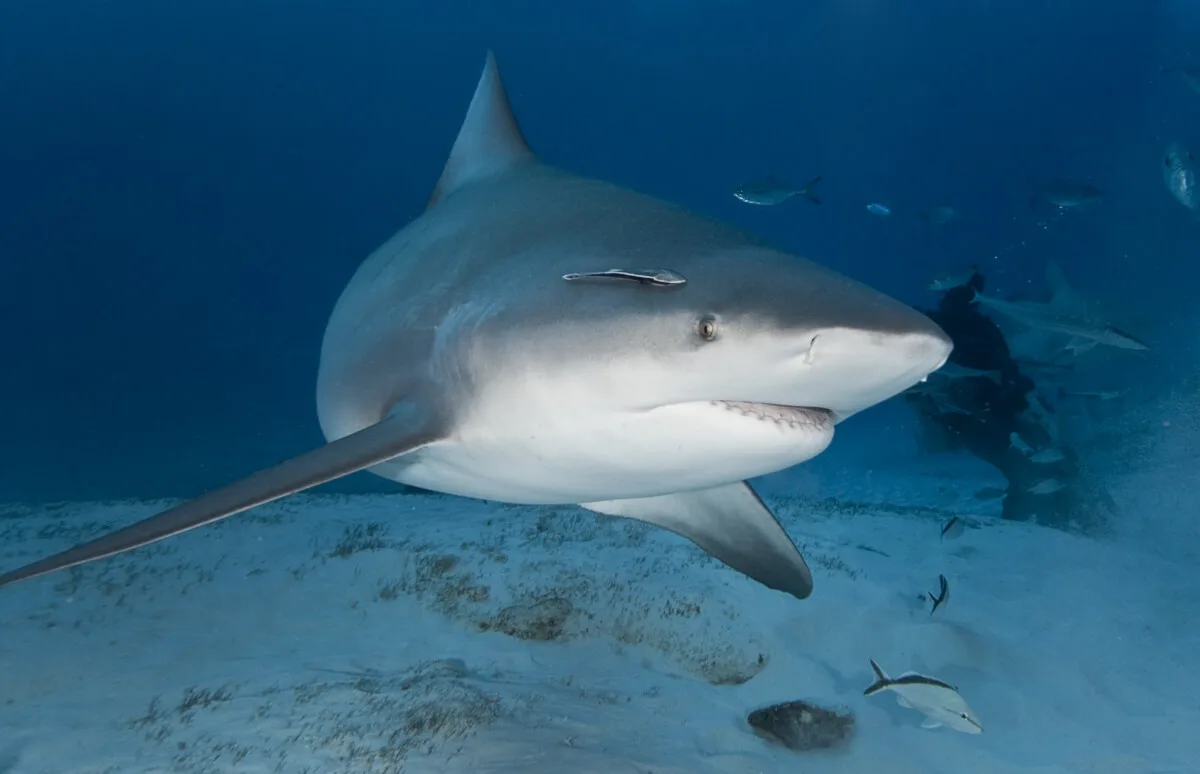
3. Irukandji jellyfish
Scientific name: Carukia barnesi
Appearance: A small Box jellyfish with an almost transparent bell less than 3cm across. It has four tentacles up to one meter long.
Location: Usually found in deep water along the coast of Australia.
Deadliness: While not as deadly as their larger counterparts, their stings can also prove fatal.
How to know if you’ve been attacked: The sting may only cause a slight tingle or no sensation at all. “Irukandji syndrome” takes 10 to 30 minutes to set in, characterised by lower back pain, perspiration, nausea, headaches, cramping and anxiety.
What to do if you’re attacked: Call triple zero. Put vinegar on the stings, which will prevent any venomous cells that have not already activated from firing. If no vinegar is available, wash with seawater. Carefully remove the tentacles without touching them with flesh. CPR should be administered if the victim passes out.
2. Honey bee
Scientific name: Apis mellifera
Appearance: Around 15mm long, golden-yellow, oval-shaped with brown bands.
Location: Across most of Australia. They thrive in most environmental conditions.
Deadliness: 100 honeybee stings can kill, however, a single sting can be fatal to someone with allergies which is why they make this list. While not native to Australia, the Honeybee is Australia’s deadliest insect.
How to know if you’ve been attacked: Burning pains and swelling. For those with allergies, breathing difficulties can be induced.
What to do if you’re attacked: Ice or cold compress to diminish the pain and swelling. Anti-inflammatories also help. People with allergies will likely need an EpiPen.

1. Box jellyfish
Scientific name: Chironex fleckeri
Appearance: The bell, or top of the jellyfish, is a light blue box with four corners. Clusters of about a dozen stinging tentacles grow from each corner, growing up to three meters long.
Location: Northern Australia during warm months. Box Jellyfish breed in estuaries where the water is murky, making them hard to see.
Deadliness: A large sting can induce cardiac arrest and kill within a few minutes.
How to know if you’ve been attacked: The stings, caused by brushing a tentacle, are unbearably painful. They immobilise nerves and can affect both breathing and movement.
What to do if you’re attacked: Call triple zero. Put vinegar on the stings, which will prevent any venomous cells that have not already activated from firing. If no vinegar is available, wash with seawater. Carefully remove the tentacles without touching them with flesh. CPR should be administered if the victim passes out.
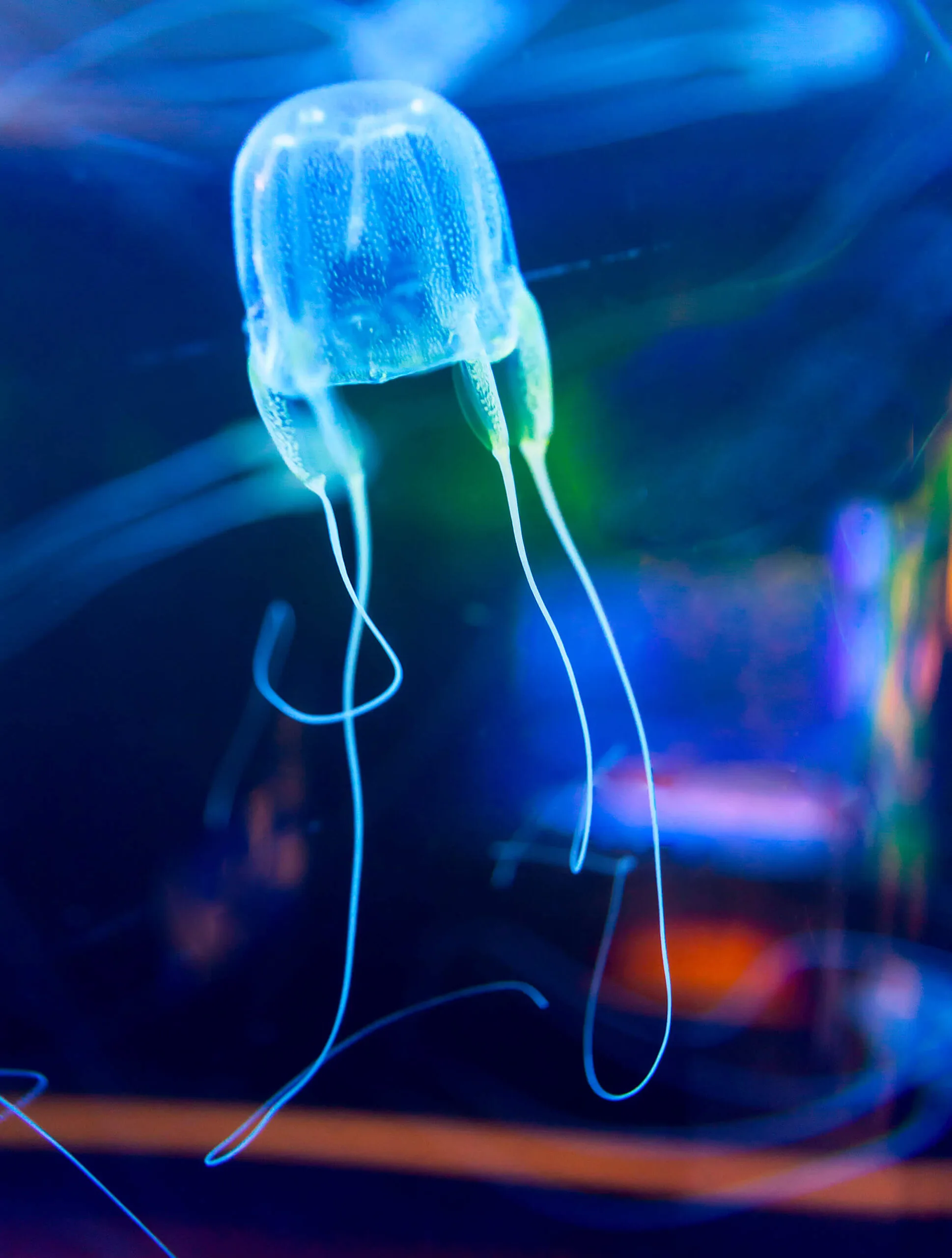
RELATED: Simple Ways To Keep Your Backyard Wildlife Friendly
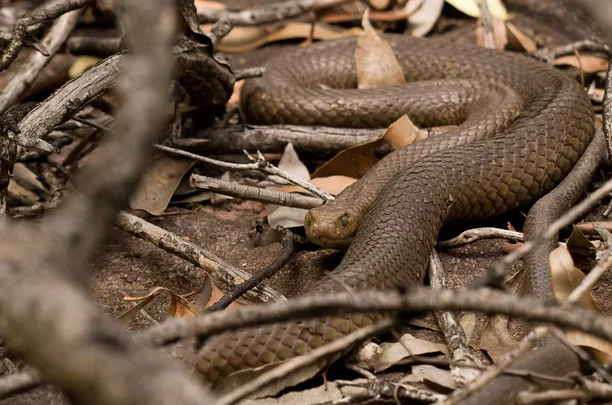 Getty
Getty





